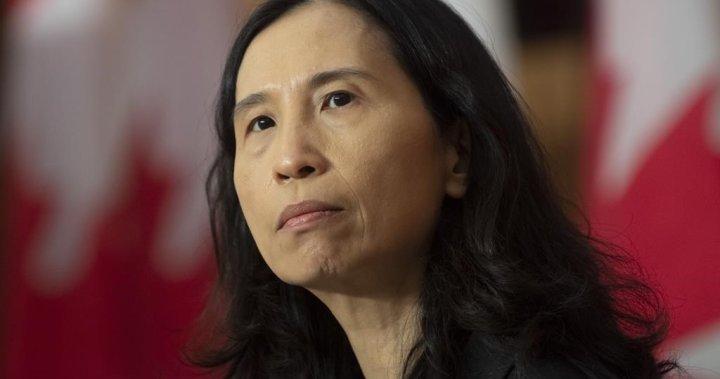As cold and flu season unfolds in Canada, a rise in COVID-19 cases is also happening across many provinces, most notably in Ontario and Quebec.
Despite the spike in COVID-19 cases alongside other respiratory illnesses such as influenza, a discernible seasonal pattern has yet to be established, warned Dr. Theresa Tam, chief public health officer at the Public Health Agency of Canada (PHAC), making it difficult to plan and time vaccine programs.
“We’re still studying whether it will settle down into some sort of seasonality and that hasn’t been completely determined yet,” she told Global News in a year-end interview. “So we’re seeing this virus still undergoing fairly rapid evolution as it’s transmitted around the world.”
Endemic coronaviruses and other common respiratory viruses, like influenza A, influenza B and respiratory syncytial virus (RSV), cause annual seasonal outbreaks in the winter months, according to a 2021 Canada Communicable Disease Report (CCDR).
“Respiratory infection season is well on the way,” Tam said. “It’s actually quite common to see significant increases in several viruses in the fall and winter months.”

Tam said COVID-19’s unpredictable nature makes vaccine rollout more difficult.
Get the latest Health IQ news.
Sent to your email, every week.
“Just like influenza vaccine planning, vaccine programs are not always straightforward,” she said. “It’s a complex piece of planning and implementation. We still have to wait and see what happens next year and the timing of the strains for the COVID-19 vaccine. Influenza, we’re actually on a fairly regular rhythm.”
Another complicating factor in the COVID-19 vaccine rollout is the desire of provinces and territories to synchronize it with influenza vaccinations, she said. That way, Canadians can easily get both at the same time.
In September, Health Canada began approving drugmakers’ new COVID-19 shots tailored to the XBB.1.5 Omicron subvariant. Provinces began rolling out the revamped COVID-19 vaccine in conjunction with the influenza shot in October, but by that point there was already an uptick in COVID-19 cases being reported.
Even still, uptake for the updated shots has been low. So far, 15 per cent of the eligible population have received the COVID-19 booster, according to the latest federal data. Data for the flu shot is not yet available.
Although COVID-19 has yet to fall into a predictable seasonal pattern, Tam and other health officials believe it may happen in the future.
The 2021 CCDR hypothesizes that SARS-CoV-2 eventually will establish a seasonal pattern similar to current endemic coronaviruses, “given the well-established pattern of seasonality in commonly circulating endemic coronaviruses.”
“We’re still learning about (COVID-19),” Tam said.
“But I’m looking towards maybe next year where some of these decisions and the way that the manufacturers can generate the vaccine … can get into a bit more of a rhythm.”
© 2023 Global News, a division of Corus Entertainment Inc.




